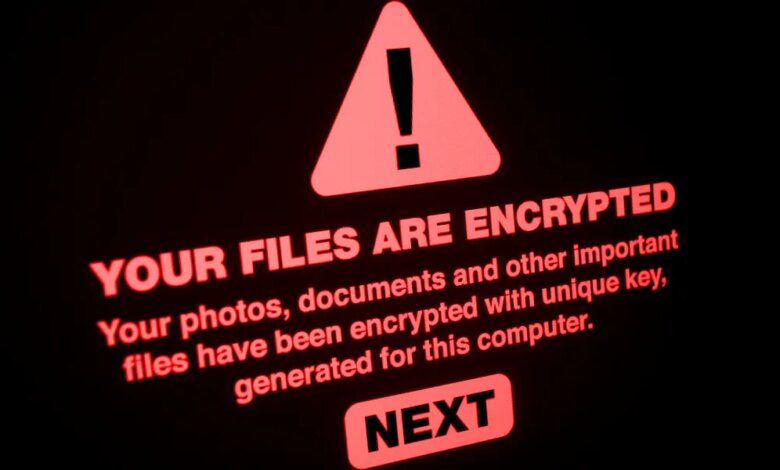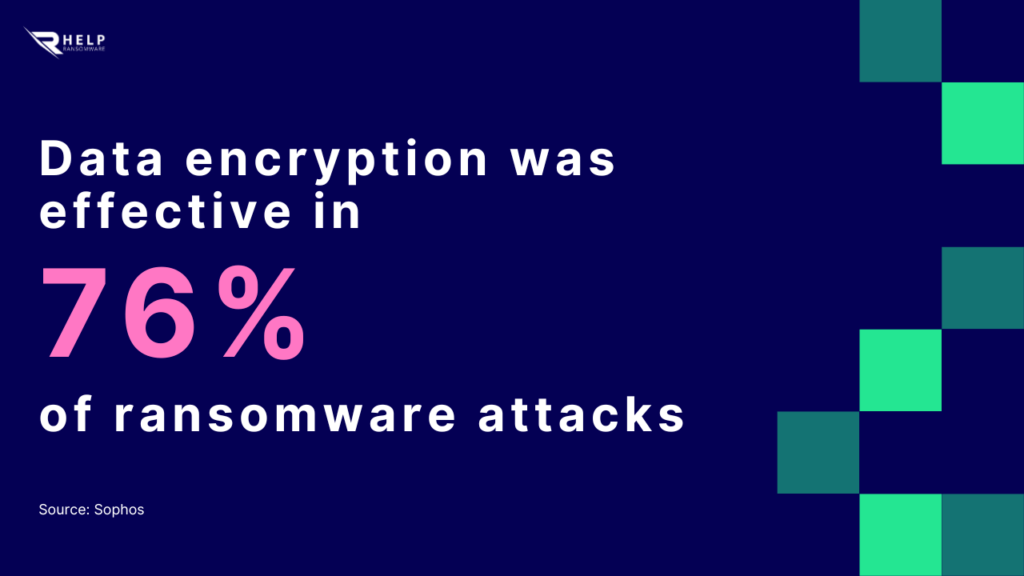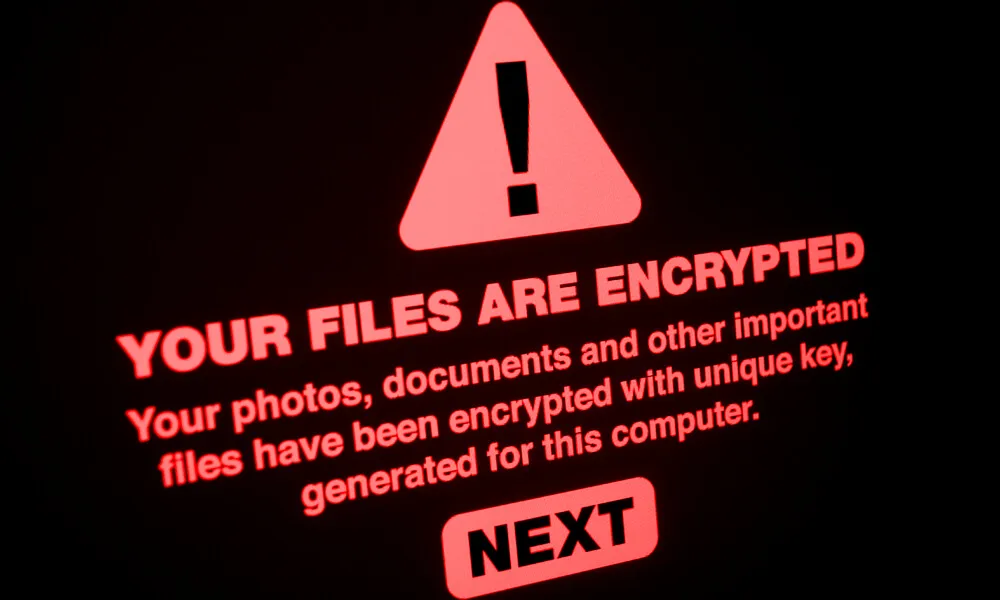
Death Ransomware Now Evolves With Stronger Encryption
Death ransomware now evolves with a stronger encryption, making it a significantly more dangerous threat than ever before. This isn’t just a minor upgrade; we’re talking about a leap forward in the sophistication of these attacks, leaving victims with fewer options and facing potentially devastating consequences. The implications for individuals and businesses are huge, forcing us to re-evaluate our cybersecurity strategies and prepare for a new era of ransomware warfare.
The shift towards more robust encryption algorithms means that traditional decryption methods are often rendered useless. This leaves victims with a stark choice: pay the ransom or face potentially irreparable data loss. This isn’t just about financial losses; the disruption to business operations, the reputational damage, and the potential for sensitive data leaks can have long-lasting effects. Understanding this evolution is crucial for building effective defenses.
The Evolution of Ransomware Encryption

The landscape of ransomware attacks has dramatically shifted over the years, largely due to the continuous evolution of encryption techniques employed by cybercriminals. Early ransomware relied on relatively weak encryption, making decryption feasible in some cases. However, modern ransomware utilizes sophisticated, highly resistant encryption algorithms, posing a significant challenge to victims and security professionals alike. This evolution reflects the increasing sophistication of cybercriminal groups and their access to advanced cryptographic tools.
The progression of encryption in ransomware reflects a clear trend towards stronger, more resilient algorithms. Early ransomware often used readily available and less secure methods, allowing for relatively easy decryption. However, as awareness of ransomware grew and security measures improved, attackers adapted, adopting more robust and complex algorithms that make decryption significantly harder, if not impossible, without the decryption key held by the attackers.
Encryption Algorithm Advancements
The technical advancements driving stronger encryption in ransomware are multifaceted. The widespread availability of powerful computing resources, both for the attackers and for the development of more complex algorithms, has been a key factor. Additionally, the development of more sophisticated encryption libraries and the proliferation of readily available, open-source cryptographic tools have made it easier for malicious actors to implement strong encryption without needing deep cryptographic expertise.
This lowered barrier to entry has resulted in a significant increase in the number and sophistication of ransomware attacks. Furthermore, the adoption of hybrid encryption schemes, combining symmetric and asymmetric cryptography, has added another layer of complexity and resilience. Symmetric encryption is used for speed to encrypt the victim’s data, and asymmetric encryption secures the symmetric key.
This makes the attack harder to reverse-engineer and increases the strength of the encryption.
Comparison of Older and Current Ransomware Encryption
Older ransomware variants often relied on simpler, less secure algorithms like RSA with smaller key sizes or weaker symmetric ciphers like AES with short key lengths. These were often vulnerable to brute-force attacks or known weaknesses in the algorithms themselves. Conversely, modern ransomware commonly employs AES-256 with strong key management practices and often combines it with other robust algorithms to create a layered defense against decryption attempts.
The use of longer keys, stronger modes of operation, and advanced techniques like salting and hashing makes the encryption much more resistant to attacks. Additionally, many modern ransomware variants incorporate features like self-destructing code or data exfiltration to further complicate recovery efforts.
Evolution of Encryption Strength in Ransomware
| Year | Ransomware Name | Encryption Algorithm | Strength Description |
|---|---|---|---|
| 2005 | GPCode | RC4 | Weak; susceptible to various attacks |
| 2013 | CryptoLocker | RSA-2048, AES-128 | Moderately strong; AES-128 vulnerable to brute-force with sufficient resources |
| 2016 | WannaCry | AES-128 | Moderately strong; but the EternalBlue exploit was a more significant vulnerability |
| 2017 | NotPetya | AES-128 | Moderately strong; widespread damage due to its self-propagation mechanism |
| 2021 | REvil | AES-256 | Strong; highly resistant to brute-force attacks |
| 2023 | BlackCat (ALPHV) | AES-256 | Strong; uses advanced techniques, including multi-layered encryption and data exfiltration |
Impact of Stronger Encryption on Victims: Death Ransomware Now Evolves With A Stronger Encryption
The evolution of ransomware has led to significantly stronger encryption techniques, making it exponentially harder for victims to recover their data without paying the ransom. This shift has profound implications for individuals and organizations alike, creating a new landscape of challenges for both cybersecurity professionals and law enforcement. The increased sophistication of encryption methods directly translates to greater financial and data loss for those affected.Stronger encryption significantly hinders the ability of law enforcement and cybersecurity professionals to decrypt files without the decryption key held by the attackers.
Traditional methods, such as brute-forcing passwords or exploiting vulnerabilities in the encryption algorithm, become increasingly impractical as encryption strength increases. This means that even with advanced forensic techniques, recovering data can be impossible or extremely time-consuming, leaving victims with little recourse but to pay the ransom or accept permanent data loss.
Challenges for Law Enforcement and Cybersecurity Professionals, Death ransomware now evolves with a stronger encryption
The rise of more robust encryption algorithms, like those based on elliptic curve cryptography or employing multiple layers of encryption, presents a formidable challenge. These algorithms are designed to resist even the most powerful computing resources currently available. Furthermore, the use of sophisticated techniques like steganography (hiding data within other data) and the fragmentation of encrypted files across multiple servers makes decryption exponentially more difficult.
The attacker’s ability to leverage anonymizing networks and employ anti-forensic techniques further compounds the problem, hindering investigators’ ability to track down the perpetrators and recover the decryption keys. The sheer volume of ransomware attacks also strains the resources of law enforcement agencies and cybersecurity firms, making it difficult to respond effectively to each incident.
Increased Difficulty in Decrypting Files Without Paying Ransom
With stronger encryption, the chances of successfully decrypting files without paying the ransom diminish drastically. Previously, some ransomware strains used relatively weak encryption algorithms or had vulnerabilities that allowed for decryption. However, modern ransomware employs sophisticated, highly resilient algorithms that are practically impossible to crack without the decryption key. This leaves victims facing a stark choice: pay the ransom and potentially enable further attacks, or accept the irreversible loss of their valuable data.
The time and resources required to attempt decryption without the key often outweigh the potential benefits, especially for individuals or small businesses lacking the expertise and resources of large corporations.
Real-World Scenarios Illustrating the Impact of Strong Encryption
The NotPetya ransomware attack in 2017, while not strictly a ransomware attack in the traditional sense, serves as a prime example. Its self-propagating nature and sophisticated encryption caused billions of dollars in damages globally, crippling businesses and disrupting critical infrastructure. Many victims were unable to recover their data, even with significant resources invested in recovery efforts. Similarly, the recent rise of ransomware-as-a-service (RaaS) platforms has made access to sophisticated encryption tools readily available to a wider range of malicious actors, resulting in a surge in attacks with stronger encryption and greater impact.
The consequences of these attacks are far-reaching, impacting not only individual victims but also entire industries and critical infrastructure.
Financial and Data Loss Consequences
The financial consequences of strong encryption in ransomware attacks can be devastating. Ransom demands often reach into the tens or even hundreds of thousands of dollars, and paying the ransom offers no guarantee of data recovery. Beyond the ransom itself, victims face additional costs associated with data recovery efforts, system restoration, legal fees, and potential business disruption. The loss of sensitive data, including intellectual property, customer information, and financial records, can have long-term repercussions, impacting an organization’s reputation, customer trust, and future profitability.
For individuals, the loss of personal photos, financial documents, and other irreplaceable data can be equally devastating. The intangible costs of data breaches, such as reputational damage and legal liabilities, should also be considered, further emphasizing the significant overall impact.
Technical Aspects of Advanced Encryption in Death Ransomware
Death Ransomware’s evolution towards stronger encryption necessitates a deeper understanding of the technical intricacies involved. This section delves into the likely encryption algorithms, key management strategies, and data integrity mechanisms employed by this advanced malware. The sophistication of its encryption presents significant challenges for victims and underscores the need for robust cybersecurity measures.The advanced encryption techniques used in Death Ransomware likely leverage a combination of robust, widely available, and difficult-to-crack algorithms.
Understanding these methods is crucial for developing effective countermeasures.
Encryption Algorithms Used
Death Ransomware likely employs AES (Advanced Encryption Standard) with a key length of 256 bits, or potentially even stronger algorithms like ChaCha20 or XChaCha20, known for their speed and security. AES-256 is a widely adopted standard considered highly secure against brute-force attacks, given the immense computational power required to crack a 256-bit key. The selection of ChaCha20 or XChaCha20 might indicate a focus on performance, especially for encrypting large datasets, while maintaining strong security.
The specific algorithm used would likely be determined through reverse engineering of the ransomware sample.
Encryption Key Generation and Management
The ransomware likely generates unique, randomly generated encryption keys for each victim. This is a crucial aspect of its design, preventing a single master key from compromising all encrypted files. Key generation involves using a cryptographically secure random number generator (CSPRNG) to ensure unpredictability and randomness in the key. The key is then stored securely, either locally on the infected machine (though this is less secure) or exfiltrated to a command-and-control (C&C) server controlled by the attackers.
The key management process is critical, as compromising the key management system could allow decryption of the victim’s files. For example, if the key is stored locally and the ransomware is removed before the key is exfiltrated, the victim’s files may be unrecoverable. Conversely, storing the key on a C&C server increases the risk of the key being intercepted by law enforcement or security researchers.
Data Integrity and Confidentiality
Death Ransomware likely employs techniques to ensure both the integrity and confidentiality of encrypted data. Confidentiality is achieved through the strong encryption algorithms discussed earlier. Integrity is often maintained through the use of Message Authentication Codes (MACs) or digital signatures. A MAC, generated using a secret key, ensures that the encrypted data hasn’t been tampered with during transmission or storage.
A digital signature, created using asymmetric cryptography, provides authentication and integrity verification, confirming both the authenticity of the encryption and the integrity of the encrypted data. The use of these mechanisms significantly increases the difficulty of altering the encrypted files without detection.
Asymmetric or Hybrid Encryption Techniques
While symmetric encryption (like AES) is likely the primary method used for encrypting the victim’s files due to its speed and efficiency, Death Ransomware might also employ asymmetric encryption (like RSA or ECC) in a hybrid approach. In a hybrid scheme, a symmetric key is used to encrypt the files, and an asymmetric key is used to encrypt only the symmetric key itself.
This ensures that the symmetric key, which is relatively small, is securely transmitted to the attackers. The asymmetric key is typically stored on the attackers’ servers, requiring a secure communication channel between the ransomware and the C&C server to transmit the encrypted symmetric key. This combination balances the speed of symmetric encryption with the security benefits of asymmetric encryption for key exchange.
This makes decryption much more difficult, as the attacker’s private key is required to decrypt the symmetric key, which is then used to decrypt the victim’s files.
Prevention and Mitigation Strategies
Protecting your systems from the ever-evolving threat of ransomware like Death Ransomware requires a multi-layered approach. A robust strategy combines proactive measures to prevent infection with reactive plans for recovery should an attack occur. This involves technological safeguards, robust data management, and a well-trained workforce.
Comprehensive Prevention Strategy
A successful prevention strategy isn’t about a single solution but a combination of techniques working together. This holistic approach minimizes vulnerabilities and strengthens your overall security posture. Failure at one point shouldn’t compromise the entire system. Think of it as a layered defense, where each layer adds another level of protection.
- Regular Software Updates and Patching: Promptly applying security patches from vendors is crucial. Outdated software contains known vulnerabilities that ransomware can exploit. Automate update processes whenever possible to ensure timely patching.
- Strong Passwords and Multi-Factor Authentication (MFA): Employ strong, unique passwords for all accounts and enable MFA wherever available. MFA adds an extra layer of security, making it significantly harder for attackers to gain unauthorized access.
- Network Security: Implement robust network security measures, including firewalls, intrusion detection/prevention systems (IDS/IPS), and regular network security audits. These tools monitor network traffic and block malicious activity.
- Email Security: Train employees to identify phishing emails and avoid clicking on suspicious links or attachments. Implement email security solutions that filter spam and malware.
- Principle of Least Privilege: Grant users only the necessary access rights to perform their jobs. Limiting access restricts the damage a compromised account can inflict.
- Regular Security Audits and Penetration Testing: Regularly assess your security posture through internal audits and external penetration testing to identify vulnerabilities before attackers can exploit them. This proactive approach helps identify weaknesses in your defenses.
- Data Segmentation: Segmenting your network and data limits the impact of a successful ransomware attack. If one part of the network is compromised, the damage is contained.
- Application Whitelisting: Only allow approved applications to run on your systems. This prevents malicious software from executing.
Data Backup and Recovery Best Practices
Data backups are not just a good idea; they’re essential. A comprehensive backup strategy is your lifeline in the event of a ransomware attack. The 3-2-1 rule is a widely accepted guideline: three copies of your data, on two different media types, with one copy offsite.
- Regular Backups: Perform backups frequently, ideally daily or even more often for critical data. The frequency depends on your data change rate and recovery time objectives (RTO).
- Multiple Backup Locations: Store backups in multiple locations, including an offsite location (cloud storage, separate physical location) to protect against physical damage or theft.
- Immutable Backups: Use immutable backups that cannot be modified or deleted, preventing ransomware from encrypting your backups.
- Testing Backups: Regularly test your backup and recovery process to ensure it works correctly and you can restore your data quickly and effectively. Don’t wait until you need it to find out it’s broken.
- Versioning: Maintain multiple versions of your backups to allow for rollback to earlier points in time if needed.
Software Updates and Security Patches
Regular software updates and security patches are fundamental to preventing ransomware infections. Software vendors constantly release updates to address security vulnerabilities. Failing to apply these updates leaves your systems vulnerable to exploitation.
- Automated Updates: Enable automatic updates for operating systems, applications, and firmware whenever possible. This ensures your systems are always up-to-date with the latest security patches.
- Patch Management System: For larger organizations, consider using a patch management system to streamline the update process and ensure consistent patching across all devices.
- Prioritize Critical Patches: Focus on applying critical security patches promptly as they address the most serious vulnerabilities.
Employee Training and Security Awareness
Human error is a major factor in ransomware attacks. Employees must be trained to recognize and avoid phishing attempts, malicious links, and suspicious attachments.
- Regular Security Awareness Training: Conduct regular security awareness training sessions for all employees. These sessions should cover topics such as phishing, social engineering, and safe browsing practices.
- Simulated Phishing Attacks: Conduct simulated phishing attacks to test employee awareness and identify vulnerabilities in your security training.
- Clear Security Policies: Establish clear security policies and procedures that employees understand and follow.
The Future of Ransomware and Encryption
The relentless evolution of ransomware necessitates a forward-looking perspective on its encryption techniques and the broader cybersecurity landscape. Understanding potential future developments is crucial for proactive defense strategies. The arms race between attackers and defenders will continue to shape the future of ransomware, with both sides constantly innovating and adapting.
The increasing sophistication of ransomware encryption methods, coupled with the potential impact of emerging technologies like quantum computing, presents significant challenges. Analyzing these trends allows for a more informed approach to mitigating future threats and building more resilient security infrastructures.
Post-Quantum Cryptography and Ransomware
The advent of quantum computing poses a significant threat to currently used encryption algorithms. Quantum computers, with their immense processing power, could potentially break widely used asymmetric encryption methods like RSA and ECC, which are currently the backbone of many security systems, including those used to protect against ransomware. This means that current ransomware encryption, even the “stronger” versions, could become vulnerable.
The cybersecurity community is actively researching and developing post-quantum cryptography (PQC) algorithms that are resistant to attacks from quantum computers. The transition to PQC will be a gradual process, and ransomware developers will undoubtedly try to exploit any vulnerabilities or delays in its widespread adoption. The successful implementation of PQC across all relevant systems will be a key factor in mitigating future quantum-resistant ransomware attacks.
For example, the National Institute of Standards and Technology (NIST) is currently in the process of standardizing several PQC algorithms, and their adoption will be critical in the future.
The Arms Race: Offense and Defense
The ongoing battle between ransomware developers and cybersecurity professionals is a dynamic and ever-evolving arms race. Ransomware developers are constantly seeking new ways to improve their encryption techniques, making attacks more difficult to decrypt and recover from. They are exploring techniques like using more robust encryption algorithms, incorporating multi-stage encryption, and leveraging obfuscation techniques to hide their malware. On the other hand, cybersecurity professionals are developing advanced detection methods, improving decryption tools, and implementing robust prevention strategies.
This includes advanced threat intelligence, improved endpoint detection and response (EDR) systems, and better security awareness training for users. We can expect to see a continued increase in the use of AI and machine learning in both offense and defense, leading to more sophisticated attacks and more proactive defenses. For instance, the development of AI-powered malware analysis tools is helping to identify and neutralize ransomware more effectively, while simultaneously, attackers are using AI to create more evasive and polymorphic malware.
Current and Future Ransomware Response Strategies
Currently, responses to ransomware attacks often involve paying the ransom, which is a risky and ethically questionable practice. Other approaches include attempting to decrypt the data using specialized tools, restoring data from backups, and engaging law enforcement. However, these methods are not always effective, and the cost and disruption caused by ransomware attacks remain significant. Future approaches will likely focus on proactive prevention and mitigation strategies, including the widespread adoption of robust security practices, improved incident response plans, and the development of more effective decryption technologies.
A key aspect of this will be a shift towards more proactive security measures, focusing on preventing infections in the first place rather than solely reacting to attacks. This includes enhanced security awareness training for end-users, robust multi-factor authentication, and the implementation of zero trust security models. The development of more sophisticated threat intelligence capabilities will also play a crucial role in identifying and neutralizing ransomware attacks before they can cause significant damage.
Illustrative Example of a Death Ransomware Attack

Imagine a small bakery, “Sweet Surrender,” operating in a quiet suburban town. They rely heavily on their computer system for managing orders, inventory, customer data, and financial records. This reliance makes them a prime target for cybercriminals.This hypothetical scenario details a Death Ransomware attack on Sweet Surrender. The attack begins subtly, with an employee unknowingly downloading a malicious attachment in a seemingly legitimate email.
This attachment contains the Death Ransomware payload.
Initial Infection and Spread
The malicious attachment, disguised as an invoice, executes upon opening. The ransomware quickly encrypts all accessible files on the bakery’s network, including customer databases, financial spreadsheets, and recipe files. The sophisticated encryption algorithm used by Death Ransomware makes decryption extremely difficult without the decryption key held by the attackers. The ransomware also disables the bakery’s backup systems, preventing recovery from existing backups.
Seriously scary stuff – death ransomware is now evolving with stronger encryption, making data recovery even tougher. This highlights the urgent need for robust, secure systems, which is why I’ve been diving into the world of application development, specifically checking out domino app dev the low code and pro code future to see how it can help build more resilient solutions.
Ultimately, the fight against ransomware requires a multi-pronged approach, and secure app development is a key component. The increasing sophistication of these attacks is a real wake-up call.
Ransom Demand and Impact on Operations
Once the encryption process is complete, a ransom note appears on every encrypted device. The ransom note, displayed prominently on each screen, features a stark black background with the Death Ransomware logo – a stylized skull and crossbones – in bright red. The text is terse and threatening. It informs the bakery owners that all their data has been encrypted with an unbreakable algorithm and that the only way to recover it is by paying a hefty ransom in Bitcoin within 72 hours.
The note also contains a unique decryption key identifier tied to their specific infection, emphasizing the personalized nature of the attack and the urgency of payment. Failure to comply, the note warns, will result in the permanent deletion of their data. The ransom amount is substantial, equivalent to several months of the bakery’s profits.The attack immediately cripples Sweet Surrender’s operations.
They can’t take orders, access customer information, or process payments. Their ability to bake and sell their products is severely hampered, leading to significant financial losses. Employee morale plummets, and the uncertainty of the situation adds further stress. The bakery’s reputation is also at risk, as the incident could lead to loss of customer trust and potential legal issues.
The Ransom Note
The ransom note is professionally designed, avoiding obvious grammatical errors or amateurish presentation. It includes a Bitcoin wallet address where the ransom should be sent and a short, easily digestible explanation of the encryption process and the consequences of non-payment. The note also includes a timer counting down the 72-hour deadline, adding a sense of urgency and pressure.
It emphasizes the irreversibility of the data loss if the ransom is not paid on time. The note’s professionalism aims to convince the victim of the attackers’ capabilities and the seriousness of the situation. A small, almost imperceptible image of a skull is subtly embedded within the text, adding a chilling effect.
Conclusive Thoughts

The evolution of Death ransomware and its increasingly powerful encryption highlights a disturbing trend in the cybercrime landscape. We’re in a constant arms race against these sophisticated attackers, and proactive measures are no longer optional but essential. Staying informed about the latest threats, implementing robust security protocols, and regularly backing up your data are critical steps in mitigating the risk.
The future of ransomware is uncertain, but one thing is clear: we need to be prepared for even more advanced attacks to come.
FAQs
What specific encryption algorithms are likely used in Death Ransomware?
Determining the precise algorithms used in Death Ransomware requires deep technical analysis, which is often proprietary to security researchers. However, it’s likely to utilize advanced, asymmetric or hybrid encryption methods for enhanced security and resilience.
How can I tell if I’ve been infected with Death Ransomware?
Common signs include the inability to access your files, the presence of a ransom note, and unusual file extensions added to your documents. If you suspect an infection, immediately disconnect from the network to prevent further spread.
Is paying the ransom ever a good idea?
Paying the ransom is generally discouraged. There’s no guarantee you’ll receive a decryption key, and paying encourages further attacks. Focus on prevention and data recovery strategies instead.
What is the role of quantum computing in future ransomware threats?
Quantum computing poses a significant long-term threat. Its processing power could potentially break even the strongest current encryption algorithms, making future ransomware even more difficult to combat. This is a concern that requires ongoing research and development of post-quantum cryptography.





